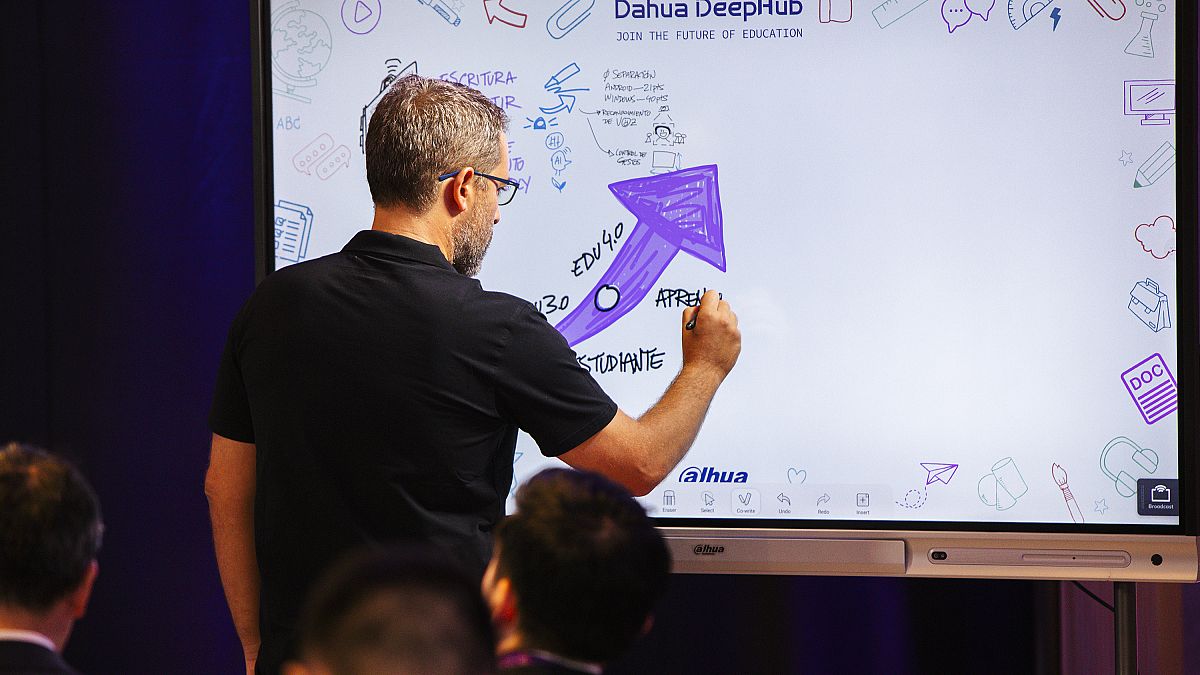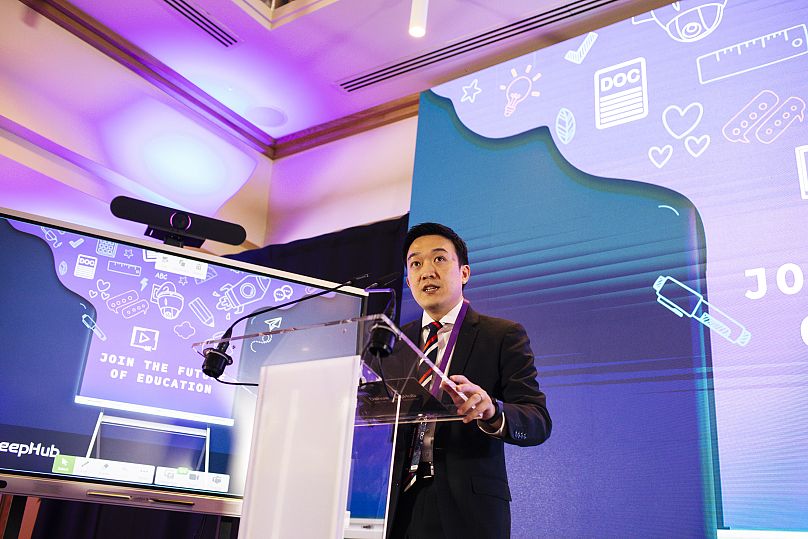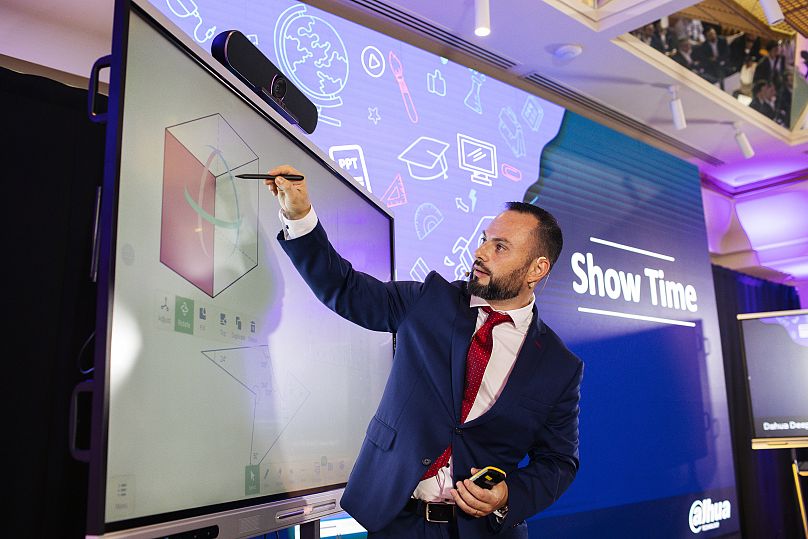In 2020, the Autonomous University of Barcelona carried out a study which introduced digital whiteboards into its educational centres.
When the interactive devices were used to support internet searches, in-class explanations and exercise corrections, the result was an increase in students’ attention spans and motivation levels.
This important research was recently cited by Chenzhi Zhu, CEO of Dahua Iberia at the Join the future of education conference in Madrid. “We are about to say goodbye to chalk stains on our fingers,” he enticed attendees, as he teed up his introduction to the DeepHub smart interactive whiteboard from Dahua, a leading global provider of video-centric smart Internet of Things solutions and services. He added, “Today, tablets have made it possible to get rid of backpacks full of books — something unimaginable a few years ago.”
Indeed, educational technology (‘edtech’) has been enjoying something of a boom. An already ascendant trend, it accelerated during and after the pandemic. Out of necessity, school and university educators worldwide were forced to adapt overnight to often unfamiliar digitally-enabled class formats that could support fully remote learning during Covid-19 lockdowns.
There were hurdles for students as well, such as overcoming a sense of disengagement; one example being the increasingly common challenge of locating the active speaker during an interactive lesson.
A broader issue that’s come out of this disruptive period has arguably been how to strike the right balance between face-to-face and remote education.
Balancing the Equation
Blended learning — a mix of in-person and tech-empowered distance learning — has been gaining added momentum in the pandemic’s wake.
Co-Learn, funded in part by the European Union’s Erasmus+, launched in 2021 to examine this approach across participating primary and secondary schools in Sweden, Denmark, Finland, the United Kingdom and the Netherlands.
“All participating schools agreed that teacher presence was a core component of making remote learning effective, but could a virtual presence also be effective in the classroom?” posits Caitlin McMillan, Lead Partnerships & Programmes Officer, City of London Corporation. As such, Co-Learn has explored how a lecturer might run an individual lesson over video while a teaching assistant supported the pupils in person.
The Dahua DeepHub is one of the tools addressing many of the challenges and opportunities associated with blended learning. Its manufacturer says the devices aim to create a balance in which technology and teaching coexist in the best way possible.
The smart interactive whiteboard platform catapults the traditional blackboard concept into the digitalized era – facilitating a flexible, immersive and content-rich multimedia teaching experience.
The system includes wireless projection, low-latency paper-like whiteboard writing capability, file management and sharing (using QR codes) and video conferencing. Looking at the Co-Learn example, teachers can wirelessly share screens and appear in video chats with pupils (and each other), and record lessons for absent students or revision purposes. The in-person instructor’s notations on the 4k UHD touchscreen whiteboard display can be remotely projected/shared.
The DeepHub’s auto-framing function, along with voice tracking – a sort of automatic electronic pan, tilt and zoom camera — identifies and focuses on whoever is talking at the time via its eight-mic array — connecting speaker to listener, and ultimately fostering engagement and clear communication.
Beyond the ABCs: the Four Cs
Communication is among the so-called four Cs skills for academic and career success in the 21st century. The others are collaboration, creativity, and critical thinking. While this paradigm preceded Covid-19, as did blended learning, both seem to have recently re-emerged with increased relevancy and popularity.
Active learning is a natural fit for the 4Cs. Research has found that classroom engagement promotes deeper levels of thinking and intake than traditional passive lectures. It can also cultivate cooperation.
The European Commission’s Digital Education Action Plan (2021–2027) is aligned with these processes. Its architects want to see more personalised, flexible, and student-centred teaching, and digital upskilling supported by technology tools and collaboration platforms.
This is where innovative and intuitive systems like the DeepHub come in. The smart whiteboard enables simultaneous writing (up to nine split screen panels), paving a path for meaningful collaboration. Multiple devices — laptops, mobile phones and tablets — can simultaneously share screens. The DeepHub’s algorithm also recognises shapes and most handwriting as text, accommodating an easier, more intuitive and vibrant teaching experience.
The instructor is by no means moored to the display. They are free to walk around the classroom, prompting and engaging students, while still initiating whiteboard actions at a distance, through gesture control. All in all a more fluid, personal and interactive learning experience.
The impact of such devices on the future of education is poised to be monumental, with schools and universities already welcoming edtech into their classrooms. This year, the Community of Valencia invested over 20 million euros in the Interactive Digital Classrooms Project, with initial plans to digitise 26,082 primary, secondary and professional training classrooms. And the case studies keep coming.
Dahua’s Mr. Zhu summed up this riveting period, often dubbed Education 4.0: “If in the past, education meant ‘transmitting knowledge in a correct and uni-directional way,’, now it is more like a circle of interaction between students and teachers, through which both can take advantage and learn.”



